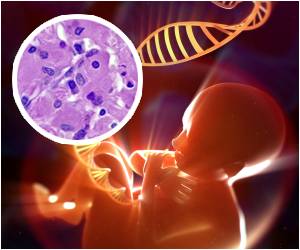Scientists at the University of California, San Diego, School of Medicine claim to have identified the first gene associated with severe, dry macular degeneration, the leading cause
The first gene associated with severe, "dry" macular degeneration, the leading cause of blindness in adults over the age of 60, has been identified by scientists at the University of California, San Diego, School of Medicine.
The researchers have also found that there could be adverse consequences, including blindness, if people with a particular variation of this gene are treated with an experimental therapy currently being tested for another form of AMD.Dr. Kang Zhang, PhD professor of ophthalmology and human genetics at Shiley Eye Center, has revealed that the team have discovered the link between dry AMD and a key molecule that alerts the immune system to the presence of viral infections, a molecular protein called toll-like receptor (TLR)3.
"Because of speculation among scientists that viral infections provoke the inflammation that increases the risk of macular degeneration, we tested for associations between AMD and TLR3, which is known to support innate immunity and host defence," said Zhang, lead researcher of the study published in the New England Journal of Medicine.
The researchers said that a genetic variant associated with low activity of the TLR3 receptor seemed to confer protection against dry AMD, probably by suppressing the death of certain retinal cells.
Dry AMD occurs when light-sensitive cells in the centre of the retina, or macula - called retinal pigment epithelial cells - slowly break down, gradually blurring central vision. Over time, as less of the macula functions, central vision is irreversibly lost in the affected eye.
Zhang said that the study indicated that people with a genetic variant of TLR3, who undergo a new treatment called RNA interference (RNAi), could be at risk.
Advertisement
"If you are genetically susceptible to macular degeneration and are exposed to a virus that activates TLR3, it could lead to the death of cells in the macula. Ironically, in some individuals, using RNAi to cure wet AMD might actually increase the risk for blindness from dry AMD," said Zhang.
Advertisement
The researchers said that tests on both mouse and human subjects had shown that the use of RNAi could have the inadvertent effect of suppressing TLR3's protective role, as it induces TLR3 activation that signals other cells to increase their antiviral defences.
They said that their studies indicated that about 60 per cent more retinal cell death resulted when TLR3 activation was triggered.
"What TLR3 does in the case of perceived infection is to sacrifice infected cells - in this case, retinal pigment epithilial cells - to protect the neighborhood. Biologically well-intentioned though the sacrifice may be, it can lead to blindness." said Nicholas Katsanis, associate professor of ophthalmology, molecular biology and genetics at Johns Hopkins School of Medicine and co-lead author on the study.
Hemin Chin, director of the ocular genetics program at the National Eye Institute, said that the discovery might have major preventive and therapeutic implications.
"Given its high prevalence in the United States and the world, finding effective prevention and treatment strategies for AMD is of critical importance. This finding represents a major advancement in our understanding of dry AMD, for which effective treatment is not yet available," said Chin.
Source-ANI
RAS/L










